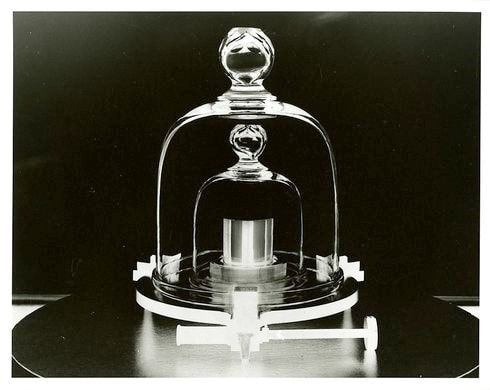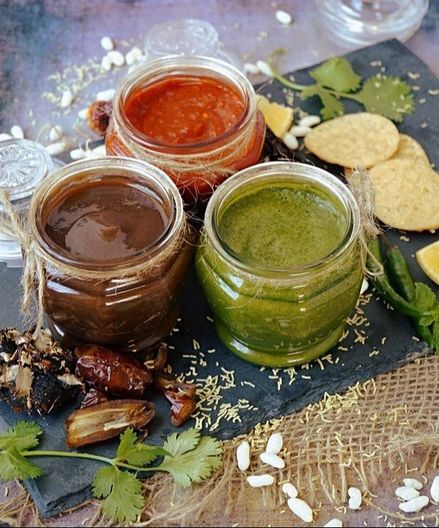|
Secret wishes to have a size 8 waist line or an athletic body sets involuntary standards in our minds and we work upon getting those numbers off the kilogram scale as fast as we can. But did you ever wonder what stands as the standard for the same kilogram that we entrust with for showing us our correct weight?
Whether it is a kilo of potatoes on a vendor’s scale or 100 kilos of a couch potato on the weighing scale, the humble kilo has a big job to do: to show you the accuracy you trust with your life! All the world’s weighing scales, weights and measuring instruments are calibrated copies of a single piece of cylinder-shaped platinum-iridium alloy that defines the fundamental unit of mass: The Le Grand K (the Big K in French). For a good 138 years like a fairytale princess, Le Grand K sits untouched by human hands, in 3 bell jar-secured contraption in Saint Cloud, France, safe and proud as the most definitive and accurate measure of a kilogram that the world can get. But come November, it is going to be deported from its castle into oblivion, eventually being rendered a lump of useless metal. This sounds beyond consolation but at the same time incredible too! Precision is the word. Measurements like weight, volume, speed, units of light and electricity and its kins are always in the zero tolerance zone. They define the most crucial components of this universe and any deviation from precision affects the continuity of the same. Le Grand K lost a point when it lost some weight in 1991 and gained a few micrograms in 2013! For eons, human scale was used for determining measurement units. Ever wondered why foot is called a foot? The most gallant and heroic of Greeks and Romans, considered as epitome of strength and masculine perfection, were believed to have feet measuring upto 12 inches. And that is how the unit foot got its etymology. Similarly, a thumb being an inch and a cubit being the length of a pharaoh’s forearm amongst many other were embraced as the penultimate scales. But centuries later, James Clerk Maxwell, a physicist challenged the wisdom of using physical objects as standards for measurements, be it our own mother earth whose length of a full quadrant, pole to equator, divided by ten millions gave us the metre! His theory did make sense though. Because, as an entity with volcanoes and earthquakes changing its dynamics and shape every other decade, earth can deceive the metric system soon. And that, only molecular bodies can provide absolute, stable and unalterable invariables as against all other physical variables, in his words “standards of length, of time and of mass should be hence measured in the wavelength, the period of vibration and the absolute mass of these imperishable and unalterable and perfectly similar molecules.” Hence coming November, the International Bureau of Weights and Measures (BIPM) will abide by what Maxwell professes as determining the kilogram “by taking the fixed numerical value of the Planck constant h to be 6.62607015×10−34 when expressed in the unit J/s, which is equal to kg/m2/s−1, where the metre and the second are defined in terms of c and ΔνCs”. If physicists are successful in determining a considerable value of Planck’s constant, it will be like butter-in-knife to get a new standard of weight occupying the Hall of Fame in BIPM. Nevertheless, whether it is Planck’s constant or any other profound theory, the only thing constant is change. So by the laws of nature, our old fellow Le Grand will have to step down its throne and give space to the next good. Now whatever this titanic wind of change means, all we can see is our little man right now sitting oblivious of upcoming onslaught on its singularity and the name it has earned for more than a century. While we are mourning over the kilos we have gained, the kilo mourns its identity crisis before it turns into a piece of priceless metal gathering dust in a tiny chamber of some museum as a tribute to its good deeds. Let’s all observe 2 minutes of silence for it, before the standard for time changes its course too! A 12 year old jaipuri handpainted ceramic mason jar from the remotest corner of the highest shelf on my kitchen cabinet plunged to death yesterday! As I was brooming the pieces to safety, my son came to give me a helping hand. Allured by the colourful though broken pieces of a decade-old jar from my collectives, he asked what it was for. “It is a chutney jar”, I replied. His matter-of-factly response struck an old chord in me: “Why don’t you make chutneys?”
There are atleast 2 chutney jars in every Indian's house: one for that ingeneous spicy-tangy dip on-the-go and the other to soothe our sweet tooth. We are dysfunctional without chutneys and pickles. While pickles are high in oil and salt content and have to be consumed in extremely limited quantities, chutneys have an advantage of liberally occupying a large segment of our plates. I would confess that just typing this blog piece is hyper-activating my salivary glands and that is the power of these succulent preparations, which have anointed our culinary existence for umpteen number of years across all parts of India. Be it the good old south Indian breakfast idlis and dosas, or the effervescent parathas, mid day cravings or your favourite kabaabs, no time to cook up a dish to go with your rotis, or a lazy Sunday eve snacking, chutneys are always to your rescue! When versatility and health tie the knot! The most striking part of these lip-smacking delicacies is that they don’t come with standard recipes! The ingredients and preparation can be twisted from one kind to the other based on preferences and type of meals they are to go along with. But it is not all about the taste buds that chutneys talk about. They can be extremely healthy additions to our daily diet. Extremely low on refined carbs or saturated fats, and blended with a cheerful spectrum of spices, chutneys are unarguably by far the yummiest creations emerging from our kitchen counters! Certain key elements of chutneys existing from ages, like coriander, curry leaves, mint, methi, asafoetida, tomato, onion, garlic, tamarind, mango, indian gooseberries (amla), caraway or ajwain leaves, coconut, peanuts and roasted gram are bundles of nutritive goodness. To complement these classics, vegetables like carrots, beetroots and capsicum, to name just a few, have also crept into the ambrosial world of chutneys to carve their niches! Incorporation of green leaves renders chutneys abundant in chlorophyll and antioxidants. Coriander, mint, fenugreek and curry leaves are rich source of vitamins, iron, folic acid and essential minerals and since there are not cooked their nutritive value is also kept intact. The digestive benefits of gooseberries, asafetida, ajwain, tamarind and methi, good fats from coconut and peanuts, complex carbs from grams and other legumes, antimicrobial property of garlic, onion and ginger and the numerous benefits of spices added into them make chutneys win hands down! All rolled in one, with super-satisfied buds and super-soothed bowels, what more can one ask for! But as every good thing in life comes with a disclaimer, our dear chutneys also carry a caveat: The salty and sugary struggle! We need to be extremely judicious with the quantity of these two flavours we give to chutneys. We usually undermine and overdo this aspect. Overenthusiasm often makes us add that extra spoon of salt and consume too much of those sweet chutneys, both being wickedly disastrous for our health! A slightly wiser option to exercise would be using a few dates for sweetening instead of sugar and perhaps a sprinkle of rock salt or black salt to get those extra minerals (although the sodium chloride level is same in all types of salts). Nevertheless, stay moderate with the salt while preparing, and minimal with the sweet one while eating. What makes our soul cry out for chutneys? Our meals are incomplete without something tangy and spicy hitting our palates. The craving for tang, sour and spice is as natural as call of nature and just the sight of chutney gets our saliva inundating our oral cavity! Ever wondered why? Ivan Pavlov’s dog gave us all our answers long time back! Our salivary glands get into action with not just the taste (unconditioned response) but even with the sight of sour and spicy delectables (unconditioned response). This Pavlovian or classical conditioning mechanism ensures provision of sufficient saliva to dilute the extremity of the flavour as well as to aid in bolus formation and digestion. Little did we know that there existed, such a profound connection between unflinching love for chutneys and our 8th standard science chapter! Already noon? As I drool away to concluding this chutney chant, time to put the chutney jar on to the mixer and churn out some tantalizing savory to oomph up your luncheon! We all have atleast that one vegetable from childhood etched in our memory that made us cringe but our mothers shoved down our throat mercilessly and successfully! My mother was an expert of disguising and plating the most obnoxious vegetables for meals. I have been bulldozed by Kamal-Kakdi curry so much that I can perhaps sketch the cross-section image of this lotus Stem with greater precision than I can draw a lotus flower! But from the time it seemed holocaustic to now when I cannot stop singing praises for it, this extremely underrated veggie has travelled right up my ascending colon to my heart!
The splendid and majestic Lotus, taxonomically christened as Nelumbo nucifera, is not considered glorious (enough to be crowned as our national flower) just flippantly. It is indeed one of the most remarkable plants, coming close to the coconut palm, every part of which provides us with a plethora of benefits. The lotus plant has been used as core ingredient of East and Southeast Asian traditional medicines and cuisines for the longest time possibly known. The flower and leaves, apart from their ornamental charm are used as tea infusion for soothing gastric disturbances and lowering blood pressure. Lotus seed commonly known as makhana is an abundant source of proteins, vitamins and minerals, and is an excellent snack option for weight watchers, diabetics and health-conscious. And the lotus rhizome, the stem right down till its root, is a not-so-popular but nutritionally rich food. The rhizome is plush with dietary fiber but low on fat, making it an amazing food choice for keeping calories in check. A 100g serving carries only 74kcals contributed by 3g of proteins, 15g of carbs and 7 g of fiber. Don’t be surprised if your stomach and intestines gurgle a bit for the first time. It is the acids and gastric juices getting into the assembly line. You will soon be rid of any constipation or acid reflux problems. So, try out a bowl of crunchy lotus stem for super smooth bowels! Each serving of lotus stem provides us with essential minerals like magnesium (23mg) and phosphorus (100mg) for maintaining blood sugar levels and DNA integrity respectively, and, potassium (556mg) and iron (1.2mg) for controlling blood pressure and red blood cell formation. Amongst other phytonutrients, zinc and copper also constitute a large percentage of its mineral repertoire. High potassium content of lotus stem counteracts the sodium flux and prevents retention of excess water and keeps your kidneys flushed. How more magnificently ironical can nature be for bestowing on a plant growing primarily in water, the ability to drain out yours! Containing 44mg of ascorbic acid that amounts to 73% of our daily dietary value, we surely cannot discount out the vitamin C quotient of the lotus rhizome. Bite into these succulent stems and see your skin and hair growing as luscious as a lotus bloom! Pyridoxine of the vitamin B complex is involved in a signaling cascade with neural receptors that influence mood and behaviour. So, if you have been thinking all this while that it is the lotus flower symbolizing peace and tranquility, you know now where the peace of mind actually ‘stems’ from! The lotus stem, though very delicately flavored, can be transformed into amazing cuisines. From sautéed dishes of Japan and Chinese soups and salads to spicy Indian curries and chips, it has carved a niche for itself in more than half of Asia. The only care we need to take is hygiene. Since it is grown in swamps, it is harvested and sold muddy. It stickers along aggregates of aquatic microflora which can compete with the natural intestinal microbiota and cause acute infections. It should not be consumed raw for this reason. And since it is a pretty sturdy and versatile shoot, you can explore different ways to cook it. India is home to an extensive variety of classical vegetation which often don’t get their due credit. Staying ignorant about or underusing their potential is plain criminal! Despite the abundance of goodness this pocketed stem carries, it goes unnoticed. And if this versatile handsome fellow doesn’t slam the beauty-with-brains category, then who else will? |
AuthorDietitian & Nutritionist Dr. Nafeesa Imteyaz. Archives
May 2020
Categories |
- Home
- Written Testimonials
- Consult
- Clinics
- Blogs
-
Diet & Nutrition
- Diabetes Reversal
- IVF IUI not needed for PCOS PCOD Infertility
-
Medical Nutrition
>
-
Disease & Conditions
>
- Infertility | PCOS
- Diabetes Mellitus
- Cholesterol
- Hypothyroid
- Kidney Problems
- Hypertension
- Cardiovascular Diseases
- Liver Diseases
- Gastro intestinal disorder
- Cancer
- Metabolic Disorders
- Orthopedic Disorders
- Eating Disorders
- Dietary Recall
- Weight Record Filled By Clients
- Online Payment Transaction Details
- Online Clients Weight Check Form
- Our Program Package Service Charges
- Weight Record 2017 Clients
- Measurements sent by Clients
- Terms & Conditions Of Payment
- Thanks. Your Form is Submitted
- Video Testimonials
- Lifestyle & Wellness
- Lifestyle & Wellness Blog
- Allergy & Intolerance
- Weight Loss / Gain
- Weight Loss / Slimming Blog
-
Disease & Conditions
>
- Life Cycle Nutrition >
- Sports Nutrition >
- Integrity in Nutrition
- Knowledge Centre
© COPYRIGHT 2022. ALL RIGHTS RESERVED. FRST HEALTHCARE PVT LTD.
Dr. Nafeesa Imteyaz of First Eat Right clinic, is the Best Dietitian Nutritionist in Bangalore. Best Dietitian Nutritionist in Pune. Best Dietitian Nutritionist in Hyderabad. Best Dietitian Nutritionist in Chennai. Best Dietitian Nutritionist in Mumbai. Best Dietitian Nutritionist in Delhi. Best Dietitian Nutritionist in Kolkata.



